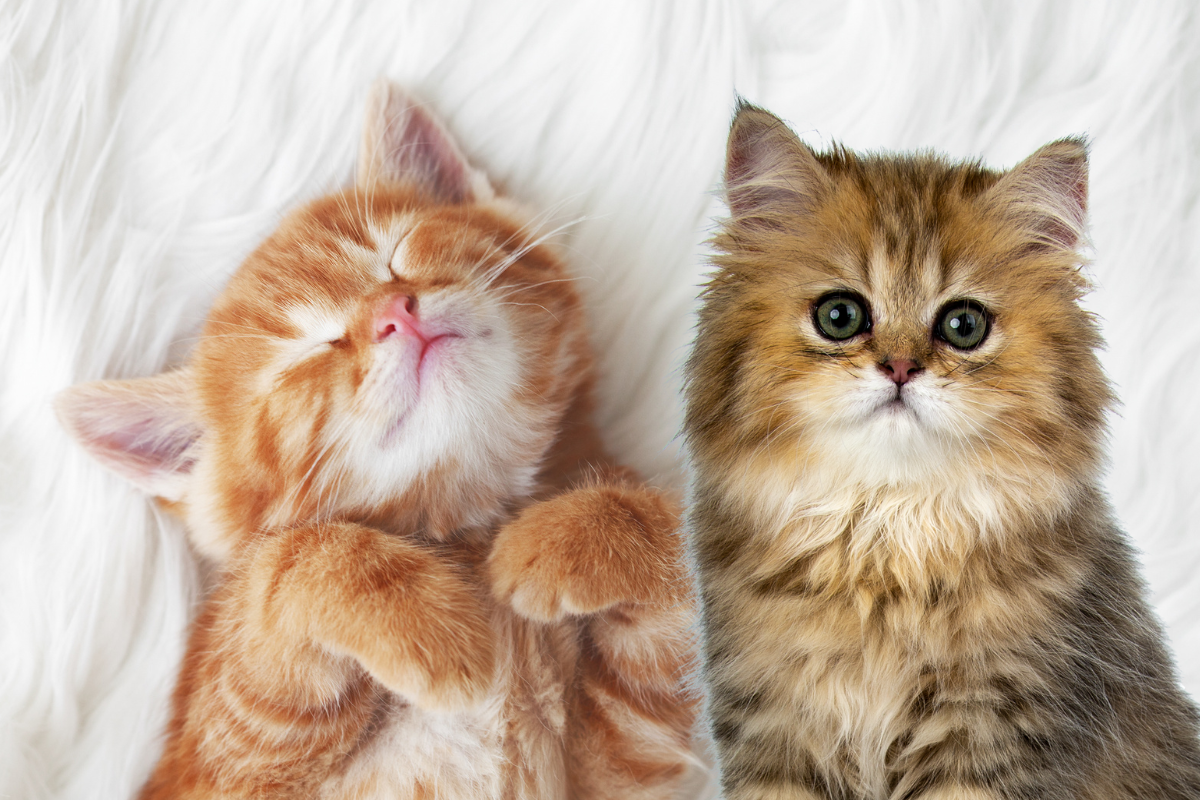Bird flu, also called avian influenza, is a disease that mostly affects birds, especially wild ones. While people mostly think of bird flu as something that only affects birds, it can sometimes spread to other animals, including cats. In this article, we will talk about how bird flu can affect cats, how it spreads, what signs to watch for, and how to keep your cat safe.
What is Bird Flu?
Bird flu is a viral disease that mostly makes birds sick. It is caused by a virus known as the avian influenza virus (AIV). The virus spreads quickly between birds, especially when they come into contact with other sick birds or their droppings. It can also spread through food, water, or equipment that is contaminated with the virus. This makes bird flu a big problem in places like poultry farms, where many birds live close together.
In most cases, bird flu only affects birds. But in rare cases, it can also spread to other animals, including cats, dogs, and even humans. There are various types or strains of bird flu. Some of these strains are more dangerous than others. For example, the H5N1 strain can cause very serious illness and even death in animals that get infected.
Although bird flu is not common in cats, cat owners need to be aware of it. The disease can be severe when it does affect a cat, and it is important to know how to protect your pet and what to do if they show signs of illness.
How Bird Flu Affects Cats
Bird flu is not something that happens very often in cats, but it is still something to be careful about. Cats are not the main animals that get bird flu. However, they can catch it in certain situations. The virus usually spreads to cats when they come into direct contact with an infected bird or anything the bird has touched, like saliva, nasal discharge, or poop. Wild birds, especially ducks and waterfowl, are the main carriers of bird flu. Cats that live or spend time outside may be at greater risk because they are more likely to come into contact with these wild birds.
It’s important to note that not all cats that are exposed to bird flu will get sick. Some cats might be exposed to the virus and not show any symptoms. In addition, bird flu does not always spread easily from cats to other animals. However, when a cat does catch the virus, it can cause serious illness, so it’s important to pay attention to any symptoms.
Symptoms of Bird Flu
If your cat has been near sick birds or seems unwell, you should watch for signs of bird flu. The symptoms of bird flu in cats are similar to other illnesses that affect their respiratory system, like the flu in humans. These are some common symptoms to watch for if you think your cat might have bird flu:
- Fever: One of the first signs of illness in a cat with bird flu is a high temperature. A cat with bird flu might have a fever, which can make them feel very hot to the touch.
- Coughing and Sneezing: Cats with bird flu often show signs of respiratory problems, such as coughing or sneezing. These symptoms are similar to what people experience when they have the flu.
- Loss of Appetite: When cats are sick, they may lose interest in food. A cat with bird flu may stop eating, or they may eat much less than usual.
- Lethargy (Tiredness): If your cat is not as active as usual, or if they are sleeping much more than normal, this could be a sign of illness. Sick cats often become very tired and don’t want to play or interact.
- Runny Nose or Watery Eyes: Some cats with bird flu will develop a runny nose or watery eyes. These are common signs of respiratory infections.
- Difficulty Breathing: In some cases, the flu can cause serious breathing problems. If your cat seems to be having trouble breathing, or if they are breathing very fast or shallow, this is a serious symptom, and you should take them to the vet immediately.
If you notice any of these symptoms in your cat, especially if they have been around wild birds or sick animals, you should take them to the vet right away. The vet can identify if your cat has bird flu and suggest the most appropriate treatment.
How Cats Get Bird Flu
The main way that cats get bird flu is by coming into contact with an infected bird. This can happen if your cat is allowed to roam outside and hunt birds or scavenge dead birds. Cats that live in areas with many wild birds, such as near lakes, rivers, or wetlands, are more likely to come into contact with infected birds. Cats can also get bird flu if they touch something that an infected bird has touched, like food, water, or a bird feeder.
While outdoor cats are at higher risk, indoor cats are not completely safe. If an indoor cat is in contact with people who have been in places where the virus is present, or if they touch contaminated objects brought in from the outside, they could still get bird flu. However, it is less likely for indoor cats to get sick from bird flu.
Preventing your cat from coming into contact with wild birds or their droppings is the best way to reduce the risk of bird flu. Keeping your cat indoors as much as possible is the safest option.
Diagnosing Bird Flu in Cats
If you think your cat has bird flu, the first thing you should do is take them to the vet. The vet will ask about your cat’s symptoms and any possible exposure to infected birds. The vet will also check your cat’s overall health and might run tests to determine if bird flu is the cause of the illness.
Diagnosing bird flu in cats requires special tests because the symptoms of bird flu are very similar to other illnesses that cats can get. For example, the vet might take samples from your cat’s nose, throat, or eyes to check for the virus. Blood tests might also be done to look for signs of infection. Since bird flu is rare in cats, the vet will need to rule out other possible causes before diagnosing bird flu.
If the vet thinks that your cat might have bird flu, they may send the samples to a laboratory that specializes in testing for avian influenza. It can take some time to get the results, but the vet will help guide you through the next steps once the results are in.
Treatment of Bird Flu in Cats
There is no specific medicine to cure bird flu in cats. However, treatment can help relieve your cat’s symptoms and give them the best chance of recovery. The treatment for bird flu in cats is generally supportive care, which helps the cat feel more comfortable and recover faster.
Some of the treatments that may be used for cats with bird flu include:
- Fluid Therapy: When cats are sick, they often don’t eat or drink enough, which can lead to dehydration. To prevent this, the vet might give your cat fluids through an IV to help them stay hydrated.
- Antibiotics: Sometimes, a cat with bird flu can also develop other bacterial infections. If this happens, the vet may give antibiotics to treat the infection.
- Antiviral Medications: In some cases, the vet might use antiviral drugs like oseltamivir (Tamiflu). However, the effectiveness of these drugs in cats is still not fully understood, so they may not always be helpful.
- Oxygen Therapy: For cats that are having trouble breathing, the vet may give them extra oxygen to help them breathe more easily.
The treatment your cat needs will depend on how serious the infection is and how quickly treatment begins. Some cats may recover with supportive care, while others may develop more serious complications. The earlier you get help, the better your cat’s chances of recovery.
Preventing Bird Flu
While bird flu is not common in cats, it’s important to take steps to protect your pet. Here are some things you can do to help reduce the risk of bird flu:
- Keep Your Cat Indoors: The best way to protect your cat is to keep them inside. If your cat loves the outdoors, you might consider building a “catio,” which is a safe, enclosed outdoor area where your cat can enjoy fresh air without coming into contact with wild birds.
- Avoid Dead Birds: If your cat goes outside, try to keep them away from dead birds. Don’t let them hunt or eat birds that may have died from the flu.
- Clean Bird Feeders: If you have bird feeders or bird baths in your yard, it’s important to clean them regularly. The virus can live on surfaces like bird feeders, so cleaning them will help prevent the spread of the disease.
- Watch Other Pets: If you have other pets that go outside, be sure to watch their health, too. Birds can sometimes infect other animals, so it’s important to keep an eye on any changes in behavior or health.
- Stay Informed: Pay attention to any news or reports of bird flu in your area. If there are reports of sick birds, your vet can provide more information and advice on how to keep your cat safe.
What to Do if Your Cat Shows Symptoms
If your cat starts showing signs of bird flu or any other illness, it’s important to act quickly. The first thing you should do is isolate your cat from any other pets. This will help prevent the virus from spreading if it is bird flu.
Next, contact your vet immediately. Be sure to let them know if your cat has been in contact with wild birds or sick animals. Your vet will tell you what to do next and may ask you to bring your cat in for testing. If bird flu is confirmed, your vet will guide you on how to care for your cat and help them recover.
The Impact on Wildlife and Pet Owners
Bird flu can have a serious impact on wildlife. Large numbers of wild birds can die from the virus, which can affect the local ecosystem. For pet owners, it can be worrying to think about the possibility of their cat getting bird flu. However, by understanding the risks and taking steps to protect your cat, you can help keep them safe from this rare but serious disease.
While bird flu in cats is uncommon, it’s always a good idea to be prepared. By knowing what signs to look for and how to reduce the risk, you can protect your cat from bird flu and other health problems.



